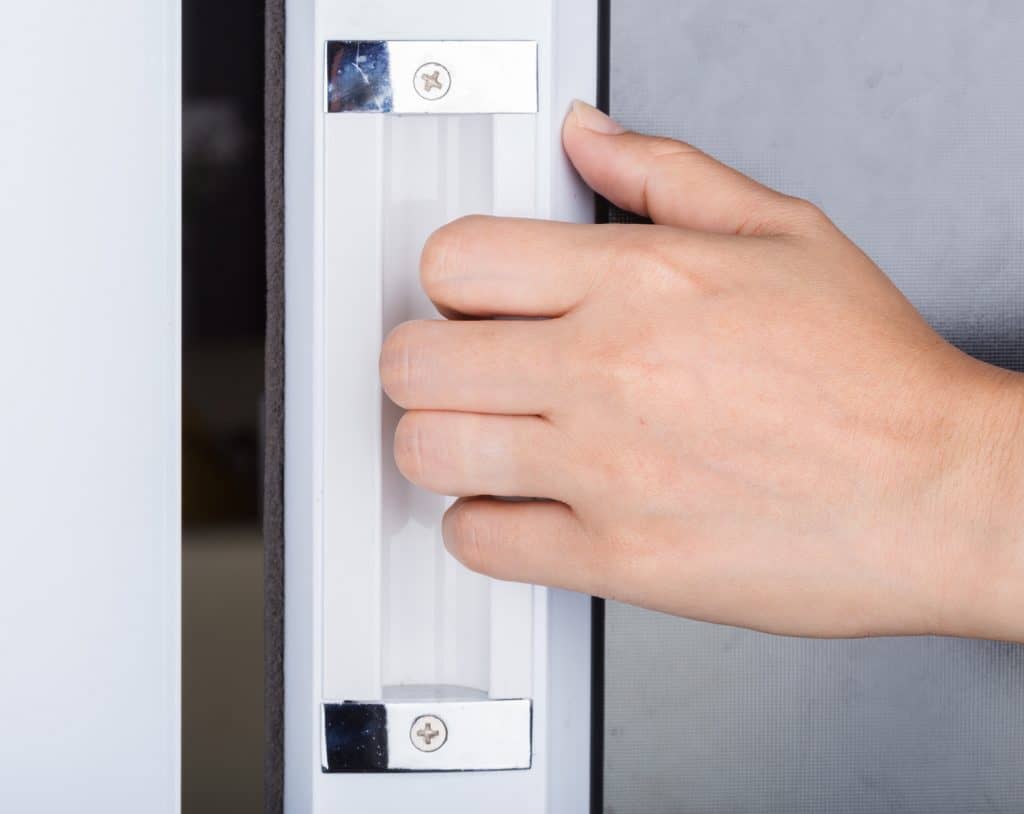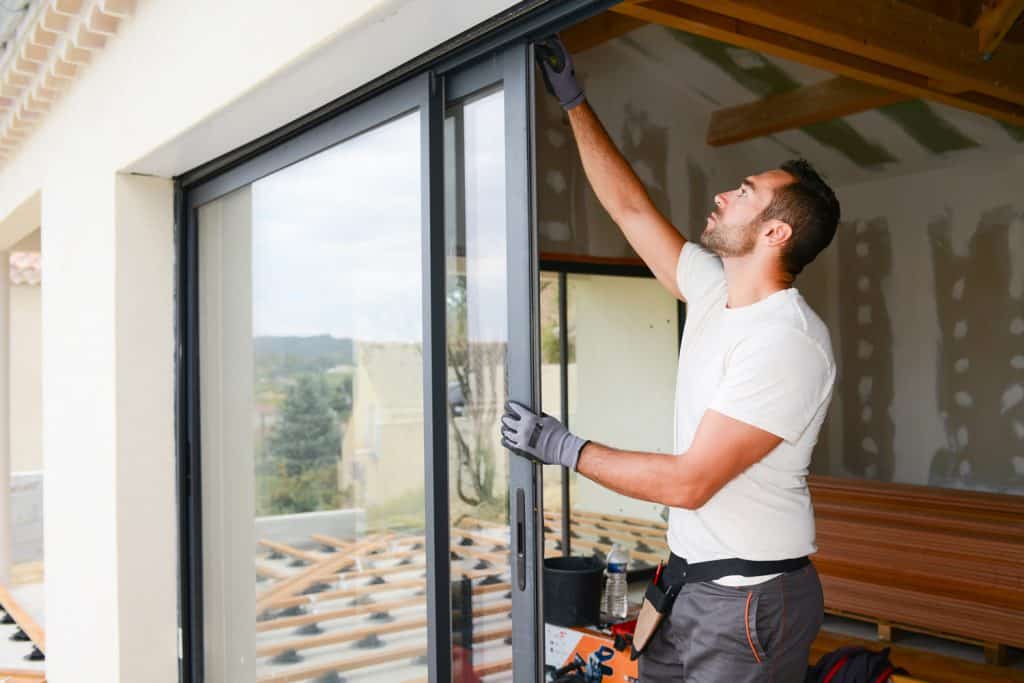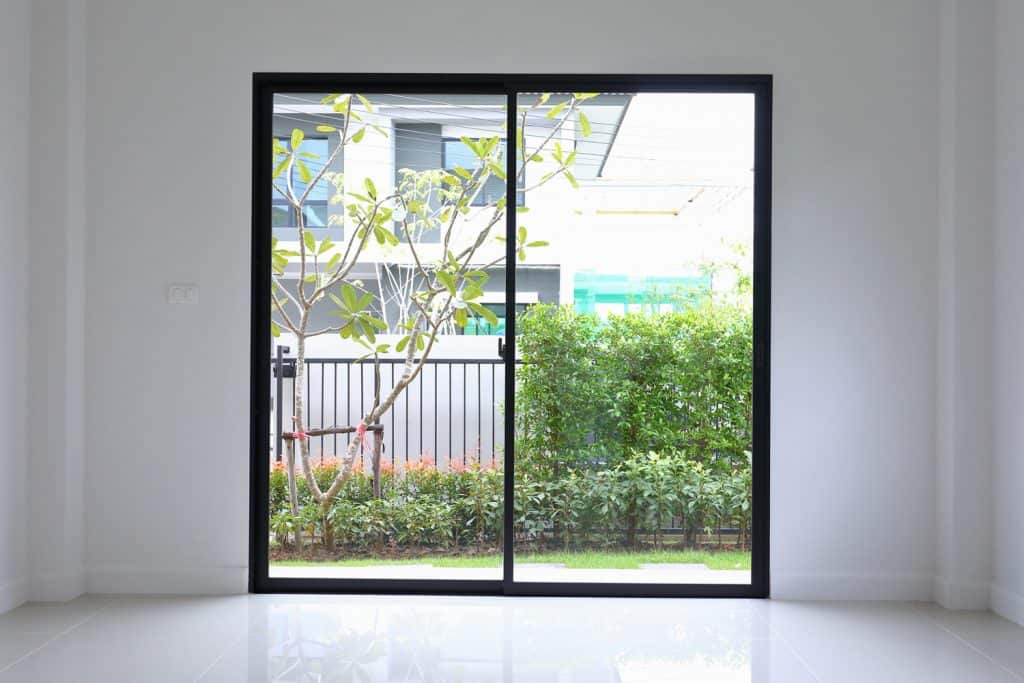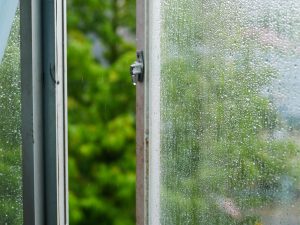Sliding doors can sometimes become sticky or fail to slide from their open to closed positions and vice-versa. So how can you make a sliding door slide easier than before? We've researched the topic to bring you the answer.
Figuring out the cause of sliding doors getting stuck is the first step to repairing the problem. These reasons may include dented tracks, unclean door rollers and trackers, and misaligned rollers. To make a sliding door easier to slide, do the following:
- Use a hammer and a small block of wood to straighten a dented track.
- Vacuum and apply lubricant on dirty rollers and tracks.
- Use a Philips screwdriver to realign misaligned roller adjustment screws.
It's important to use the correct tools and follow the right steps to get your sliding door to slide smoothly. Continue reading to take a look at our detailed guide to help restore smoothness to your sliding door.

What Makes A Sliding Door Hard To Slide?

Sliding doors may become difficult to slide if certain parts get damaged or there are obstructions in the tracks. Here is more information about these common issues:
Dented Tracks
Many sliding door tracks generally use aluminum or stainless steel. These materials are fairly durable yet lightweight. But aluminum and stainless steel can get dented and damaged over time, causing the sliding door to become sticky or fail to slide completely.
Unclean Door Rollers And Tracks
Dirt and other small debris may cause sliding door rollers and tracks to malfunction. Cleaning this debris will usually make the door slide smoothly again. But in some cases, these things can cause irreparable damage to rollers and tracks.
Misaligned Rollers
Sliding doors can also jump off of their tracks because of misaligned rollers. Realigning the sliding door rollers can help improve or solve this issue.
How Do You Fix A Sliding Glass Door That Is Hard To Slide?

The correct steps to fixing a sliding glass door that’s difficult to slide depends on the culprit. In this section, we’ll discuss the steps to reinstate the smoothness of a sliding door based on specific problems.
1. Straighten Sliding Door Tracks
As mentioned previously, many sliding door tracks usually come in aluminum or stainless steel. Luckily, repairing the dents and dings on these metal parts won't require special tools or costly professional services.
What You’ll Need
- Wooden block
- Hammer
Steps-By-Step Guide
- Place the wooden block into the track. Make sure the block fits into the track snuggly.
- Put one foot on the block to ensure it doesn’t move.
- Pound the dents and dings on the metal sliding door track to straighten it.
2. Clean Door Rollers And Tracks
You can use common household cleaning items to remove the debris from sliding door rollers and tracks to restore the doorway’s smooth operation. Here are the things you’ll need and the steps to follow to clean the rollers and tracks.
What You’ll Need
- Wire brush
- Vacuum cleaner
- Non-stick silicone lubricant
- Clean cloth or rag
- Vinegar and water cleaning solution
Steps-By-Step Guide
- Push the sliding door up and remove it from its frame.
- Place the door on two sawhorses or a surface that allows you to gain access to the rollers.
- Use a wire brush to gently remove the debris stuck on the rollers.
- Apply the non-stick silicone to the rollers.
- Use the vacuum cleaner to suck up the debris in the tracks.
- Mix a cleaning solution of equal parts vinegar and water into a spray bottle. Spray the mixture into the track to help remove the stain and grime buildup.
- Apply a thin layer of the lubricant onto the track.
- Return the door into its frame and test how smoothly it slides.
You can also check the following video for alternate steps on how to clean sliding door rollers and tracks:
Check out this other video tutorial for more information:
While you’re at it, you may also decide to clean the glass on the sliding door. Check out this post on How To Clean The Glass Behind A Screen Door for more information.
3. Realign Sliding Door Rollers
Frequent use may cause the sliding glass door rollers to become misaligned. Grab the necessary tools and follow the steps mentioned below to fix this issue.
What You’ll Need
- Phillips screwdriver
- Putty knife
Step-By-Step Guide
- Search for the two adjustment screws at the bottom of the sliding door. These components usually have plug covers for extra security.
- Remove the plug covers with the putty knife.
- Push the putty knife at the bottom of the door to make it act as a wedge. Then, push the door upwards to remove the pressure off of the roller.
- If you need to raise the door, turn the screw clockwise using the Phillips screwdriver.
- If you need to lower the door, turn the screw counter-clockwise using the Phillips screwdriver.
- Return the plug covers afterward.
Take note that you need to adjust both sides of the sliding door to ensure hassle-free functionality. Otherwise, the sliding glass door may still be sticky if you only adjust one side.
You can also check out this video to see the process:
If the sliding door frequently jumps off its track, read through this post to find the solution: Sliding Door Keeps Coming Off Track – What To Do?
Can You Use WD-40 On Sliding Glass Door Tracks?
WD-40 can be an ideal solution to restore the smoothness of sliding glass door tracks. But you should consider using WD-40 Specialist Protective Grease instead of standard WD-40.
The Specialist Protective Grease variant doesn’t drip. If you use regular WD-40, it can strip grease, exposing parts to hazards that can cause premature wear.
Click here to see this product on Amazon.
What Is The Best Lubricant For Sliding Glass Doors?

Aside from the WD-40 Specialist Protective Grease Spray, non-stick lubricants can also help in making the doorway smooth again. Some of these options include:
1. DuPont Teflon Penetrant
This lubricant uses fluoropolymer which helps reduce friction between two objects. This chemical may also help in removing squeaky sounds, and it will provide long-term rust protection.
Click here to see this product on Amazon.
2. Permatex 80078 Anti-Seize Lubricant
An anti-seize lubricant that helps return the smoothness to sliding door tracks and other surfaces. This product uses a mixture of different metals including aluminum, copper, and graphite to help objects resist salt, moisture, and corrosion.
Click here to see this product on Amazon.
3. AGS DEK3H Lubricant
While many lubricants come in liquid form, this particular product is a stick. This design choice allows users to lube sliding door parts conveniently and without making a mess.
Click here to see this product on Amazon.
Final Thoughts
Sliding doors can sometimes become sticky or stuck because of issues like dented tracks, dirty door rollers, unclean tracks, and misaligned rollers. Restoring smoothness to the sliding doorway requires a careful assessment of the problem before proceeding with the correct steps.
Applying lubricant to certain parts on the sliding door may also help preserve smooth operation. WD-40 is one example, but you should consider using the Specialist Protective Grease Spray option instead of the regular formula to avoid early wear.







